-
 Bitcoin
Bitcoin $108,708.8110
0.60% -
 Ethereum
Ethereum $2,561.6057
1.91% -
 Tether USDt
Tether USDt $1.0001
-0.03% -
 XRP
XRP $2.2795
0.57% -
 BNB
BNB $662.2393
1.00% -
 Solana
Solana $153.1346
3.74% -
 USDC
USDC $1.0000
0.00% -
 TRON
TRON $0.2877
0.97% -
 Dogecoin
Dogecoin $0.1710
3.93% -
 Cardano
Cardano $0.5871
1.61% -
 Hyperliquid
Hyperliquid $39.6663
1.68% -
 Sui
Sui $2.9032
0.79% -
 Bitcoin Cash
Bitcoin Cash $496.1879
1.71% -
 Chainlink
Chainlink $13.5807
3.01% -
 UNUS SED LEO
UNUS SED LEO $9.0777
0.61% -
 Stellar
Stellar $0.2514
4.51% -
 Avalanche
Avalanche $18.1761
1.86% -
 Shiba Inu
Shiba Inu $0.0...01173
1.72% -
 Toncoin
Toncoin $2.8010
-4.23% -
 Hedera
Hedera $0.1594
3.21% -
 Litecoin
Litecoin $87.0257
-0.53% -
 Monero
Monero $319.1217
1.79% -
 Polkadot
Polkadot $3.3853
0.68% -
 Dai
Dai $0.9999
-0.01% -
 Ethena USDe
Ethena USDe $1.0003
0.02% -
 Bitget Token
Bitget Token $4.3420
-0.97% -
 Uniswap
Uniswap $7.3772
1.39% -
 Aave
Aave $286.6277
5.61% -
 Pepe
Pepe $0.0...09994
2.33% -
 Pi
Pi $0.4589
1.76%
How can I perform hedging transactions on Bitfinex?
Bitfinex offers tools like futures, perpetual swaps, and margin trading for effective hedging in the volatile crypto market, helping traders manage risk.
Apr 24, 2025 at 10:42 pm

Hedging transactions are a critical strategy for managing risk in the volatile cryptocurrency market. Bitfinex, a prominent cryptocurrency exchange, offers various tools and features that allow traders to perform hedging transactions effectively. This article will guide you through the process of executing hedging transactions on Bitfinex, covering everything from understanding the basics to executing specific strategies.
Understanding Hedging in Cryptocurrency
Hedging in the context of cryptocurrency involves taking positions that offset potential losses in your primary investment. For example, if you hold a significant amount of Bitcoin (BTC) and are concerned about a potential price drop, you might hedge your position by taking a short position in BTC or by investing in an asset that typically moves inversely to BTC.
On Bitfinex, you can use several financial instruments for hedging, including futures contracts, perpetual swaps, and margin trading. Each of these instruments has its own set of rules and potential benefits, which we will explore in detail.
Setting Up Your Bitfinex Account for Hedging
Before you can start hedging on Bitfinex, you need to ensure your account is set up correctly. Here are the steps to prepare your account:
- Register and Verify Your Account: Visit the Bitfinex website, click on "Register," and fill out the required information. After registration, you will need to complete the verification process, which typically involves submitting identity documents.
- Enable Two-Factor Authentication (2FA): For security purposes, enable 2FA on your Bitfinex account. This can be done through the settings menu under the "Security" section.
- Deposit Funds: Navigate to the "Deposit" section, choose your preferred cryptocurrency or fiat currency, and follow the instructions to transfer funds into your Bitfinex account.
- Familiarize Yourself with the Interface: Spend some time exploring the Bitfinex trading interface, especially the sections related to futures, perpetual swaps, and margin trading.
Using Futures Contracts for Hedging
Futures contracts are agreements to buy or sell an asset at a predetermined price at a specified time in the future. They are particularly useful for hedging because they allow you to lock in prices and mitigate the risk of price fluctuations.
To use futures contracts for hedging on Bitfinex, follow these steps:
- Navigate to the Futures Trading Section: From the main trading interface, select the "Futures" tab.
- Choose the Futures Contract: Select the cryptocurrency futures contract you want to use for hedging. For example, if you want to hedge your BTC holdings, you might choose a BTC/USD futures contract.
- Determine Your Position Size: Calculate the size of the futures position you need to hedge your existing holdings. This typically involves determining how much of your BTC you want to hedge and converting that into the equivalent futures contract size.
- Place Your Order: Decide whether you want to go long or short on the futures contract. To hedge a long position in BTC, you would typically go short on the futures contract. Enter the order details and submit your order.
Hedging with Perpetual Swaps
Perpetual swaps are similar to futures contracts but do not have an expiration date, making them a flexible tool for ongoing hedging strategies. Here's how to use perpetual swaps for hedging on Bitfinex:
- Access the Perpetual Swaps Section: From the main trading interface, click on the "Perpetual" tab.
- Select the Perpetual Swap: Choose the perpetual swap contract that corresponds to the asset you want to hedge. For instance, if you're hedging BTC, select the BTC/USD perpetual swap.
- Calculate Your Position: Determine the size of the perpetual swap position that will effectively hedge your existing holdings.
- Execute Your Trade: Decide whether to go long or short on the perpetual swap. To hedge a long position in BTC, you would go short on the perpetual swap. Enter the order details and submit your order.
Margin Trading for Hedging
Margin trading allows you to borrow funds to increase your trading position, which can be used for hedging. Here’s how to use margin trading for hedging on Bitfinex:
- Go to the Margin Trading Section: From the main trading interface, select the "Margin" tab.
- Choose the Asset to Hedge: Decide which cryptocurrency you want to hedge. For example, if you’re hedging BTC, select the BTC/USD trading pair.
- Set Up Your Margin Position: Determine the size of the margin position you need to hedge your existing holdings. You can choose to go long or short on the margin position.
- Place Your Margin Order: Enter the order details, including the amount you want to borrow and the leverage you want to use. Submit your order to open the margin position.
Monitoring and Adjusting Your Hedging Strategy
Once you have set up your hedging positions, it's crucial to monitor them regularly and make adjustments as needed. Here are some tips for managing your hedging strategy on Bitfinex:
- Regularly Check Your Positions: Use the Bitfinex trading interface to keep an eye on your futures contracts, perpetual swaps, and margin positions. Monitor the market conditions and the performance of your hedges.
- Adjust Your Positions: If market conditions change or if your primary investment shifts, you may need to adjust your hedging positions. This could involve increasing or decreasing the size of your hedges or closing out positions that are no longer necessary.
- Use Stop-Loss Orders: To limit potential losses, consider using stop-loss orders on your hedging positions. This can help protect your portfolio from significant adverse movements.
Frequently Asked Questions
Q1: Can I hedge against multiple cryptocurrencies simultaneously on Bitfinex?
Yes, Bitfinex allows you to hedge against multiple cryptocurrencies at the same time. You can use different futures contracts, perpetual swaps, and margin positions for each cryptocurrency you want to hedge.
Q2: What are the fees associated with hedging on Bitfinex?
Bitfinex charges various fees for trading and using financial instruments. These include trading fees, funding fees for margin positions, and settlement fees for futures contracts. It's important to review the fee structure on the Bitfinex website to understand the costs involved in your hedging strategy.
Q3: How can I assess the effectiveness of my hedging strategy on Bitfinex?
To assess the effectiveness of your hedging strategy, compare the performance of your primary investment with the performance of your hedging positions. If your hedges are reducing the overall volatility and potential losses of your portfolio, they are likely effective. You can use Bitfinex's trading tools and charts to analyze these metrics.
Q4: Is it possible to automate hedging transactions on Bitfinex?
While Bitfinex does not offer direct automation of hedging transactions, you can use Bitfinex's API to develop custom trading bots that can execute hedging strategies automatically. This requires programming knowledge and familiarity with the Bitfinex API.
Disclaimer:info@kdj.com
The information provided is not trading advice. kdj.com does not assume any responsibility for any investments made based on the information provided in this article. Cryptocurrencies are highly volatile and it is highly recommended that you invest with caution after thorough research!
If you believe that the content used on this website infringes your copyright, please contact us immediately (info@kdj.com) and we will delete it promptly.
- Bitcoin, Jon Atack, and El Salvador: A Crypto Conundrum
- 2025-07-07 23:15:12
- Google, AI Chatbots, and Altcoins: Navigating the Shifting Sands of Search and Crypto
- 2025-07-07 23:15:12
- By Georgia:
- 2025-07-07 23:50:57
- Ethereum (ETH) Analyst Points: Is a Major Breakout Imminent?
- 2025-07-07 23:55:12
- BBVA's Crypto Leap: Bitcoin and Ethereum for the Masses?
- 2025-07-07 22:30:12
- Bitcoin, Strategy, and Windfalls: Decoding the Latest Moves
- 2025-07-07 22:30:12
Related knowledge
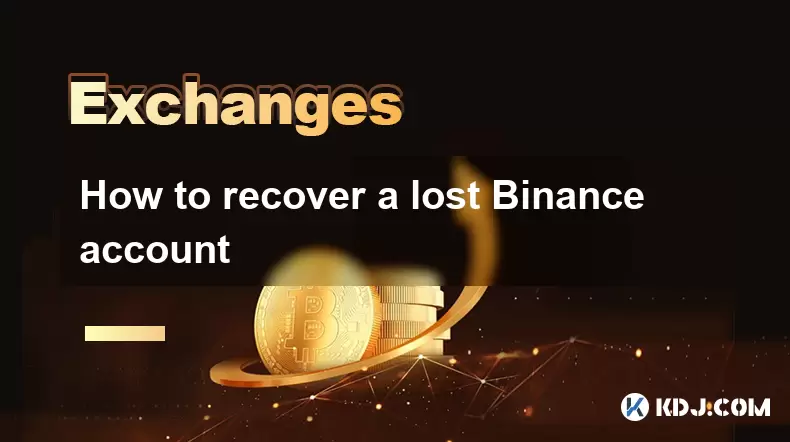
How to recover a lost Binance account
Jul 07,2025 at 09:07pm
What Happens When a Binance Account Is Lost?Losing access to your Binance account can be a distressing experience, especially if you hold significant digital assets. This typically occurs due to forgotten login credentials, loss of two-factor authentication (2FA) devices, or compromised accounts. Understanding the exact reason behind losing access is cr...

How to read Binance charts
Jul 07,2025 at 08:14pm
Understanding the Basics of Binance ChartsReading Binance charts effectively is essential for making informed trading decisions in the cryptocurrency market. Before diving into technical indicators and candlestick patterns, it's important to understand the basic layout of a chart on the Binance platform. The default chart interface displays price moveme...
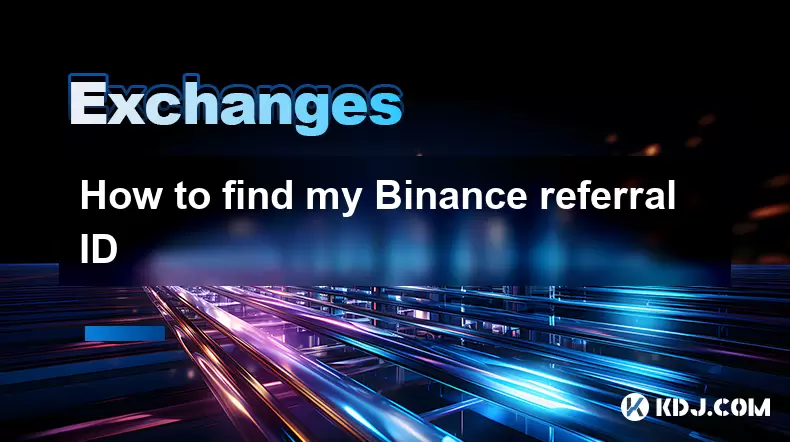
How to find my Binance referral ID
Jul 07,2025 at 06:29pm
What is a Binance Referral ID?A Binance Referral ID is a unique identifier assigned to each user on the Binance platform. This ID allows users to refer new traders to Binance and earn commissions from their trading fees. The referral program is an integral part of Binance’s ecosystem, encouraging community growth and rewarding active participants. Every...
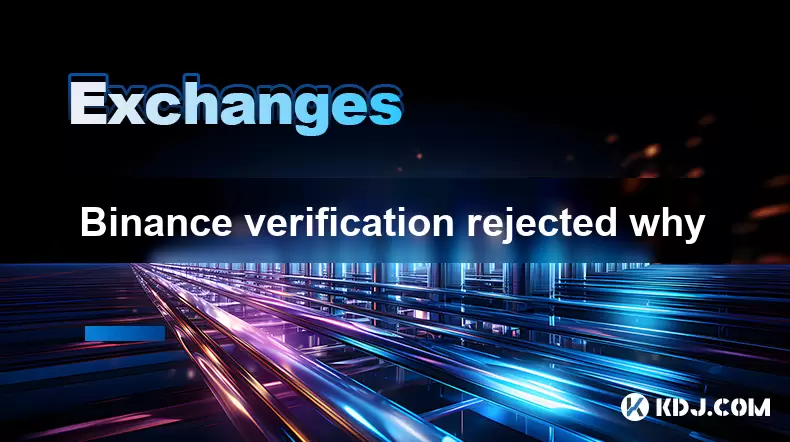
Binance verification rejected why
Jul 07,2025 at 06:57pm
Understanding Binance Verification RejectionIf your Binance verification was rejected, you're likely searching for answers on why this happened and how to resolve it. Binance, as one of the world's largest cryptocurrency exchanges, requires users to complete identity verification to comply with Know Your Customer (KYC) regulations. When a verification r...
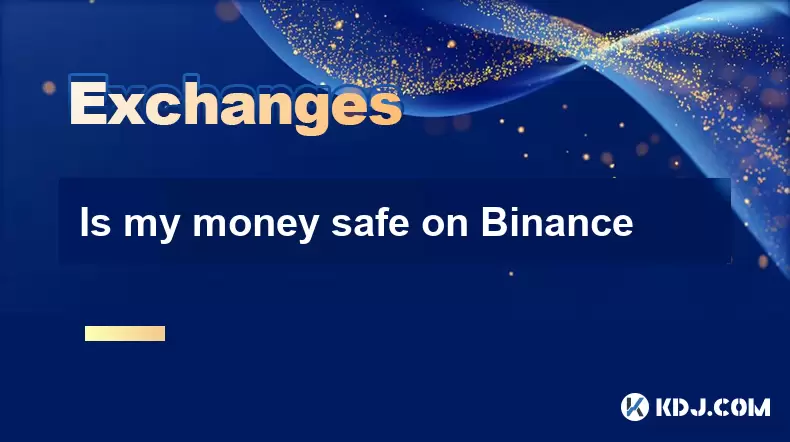
Is my money safe on Binance
Jul 07,2025 at 10:43pm
Understanding the Security Measures of BinanceWhen users ask, 'Is my money safe on Binance', they are typically concerned about the security protocols and trustworthiness of one of the world’s largest cryptocurrency exchanges. Binance has implemented multiple layers of security to protect user funds, including two-factor authentication (2FA), anti-phish...
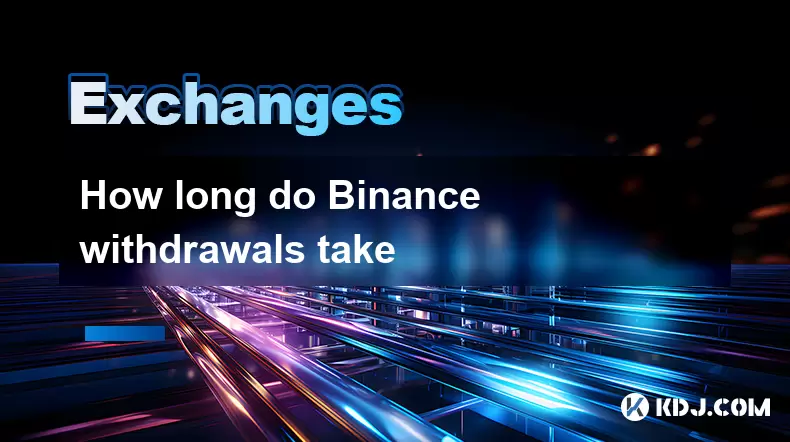
How long do Binance withdrawals take
Jul 07,2025 at 09:21pm
Understanding the Withdrawal Process on BinanceWhen users initiate a Binance withdrawal, they often wonder how long it will take for their funds to arrive at their destination wallet. The duration of a Binance withdrawal depends on several factors, including the cryptocurrency being withdrawn, network congestion, and blockchain confirmations required by...

How to recover a lost Binance account
Jul 07,2025 at 09:07pm
What Happens When a Binance Account Is Lost?Losing access to your Binance account can be a distressing experience, especially if you hold significant digital assets. This typically occurs due to forgotten login credentials, loss of two-factor authentication (2FA) devices, or compromised accounts. Understanding the exact reason behind losing access is cr...

How to read Binance charts
Jul 07,2025 at 08:14pm
Understanding the Basics of Binance ChartsReading Binance charts effectively is essential for making informed trading decisions in the cryptocurrency market. Before diving into technical indicators and candlestick patterns, it's important to understand the basic layout of a chart on the Binance platform. The default chart interface displays price moveme...

How to find my Binance referral ID
Jul 07,2025 at 06:29pm
What is a Binance Referral ID?A Binance Referral ID is a unique identifier assigned to each user on the Binance platform. This ID allows users to refer new traders to Binance and earn commissions from their trading fees. The referral program is an integral part of Binance’s ecosystem, encouraging community growth and rewarding active participants. Every...

Binance verification rejected why
Jul 07,2025 at 06:57pm
Understanding Binance Verification RejectionIf your Binance verification was rejected, you're likely searching for answers on why this happened and how to resolve it. Binance, as one of the world's largest cryptocurrency exchanges, requires users to complete identity verification to comply with Know Your Customer (KYC) regulations. When a verification r...

Is my money safe on Binance
Jul 07,2025 at 10:43pm
Understanding the Security Measures of BinanceWhen users ask, 'Is my money safe on Binance', they are typically concerned about the security protocols and trustworthiness of one of the world’s largest cryptocurrency exchanges. Binance has implemented multiple layers of security to protect user funds, including two-factor authentication (2FA), anti-phish...

How long do Binance withdrawals take
Jul 07,2025 at 09:21pm
Understanding the Withdrawal Process on BinanceWhen users initiate a Binance withdrawal, they often wonder how long it will take for their funds to arrive at their destination wallet. The duration of a Binance withdrawal depends on several factors, including the cryptocurrency being withdrawn, network congestion, and blockchain confirmations required by...
See all articles

























































































